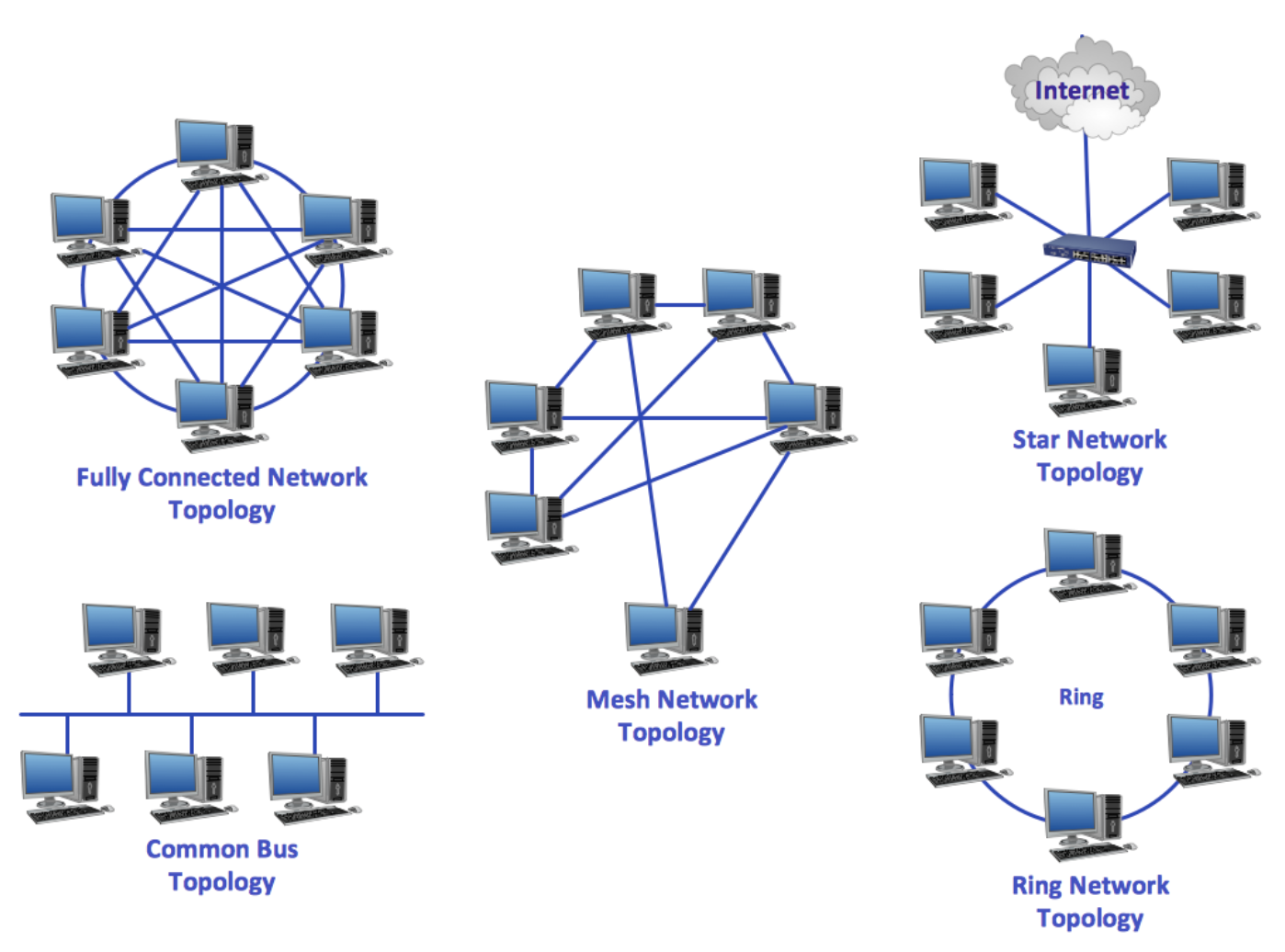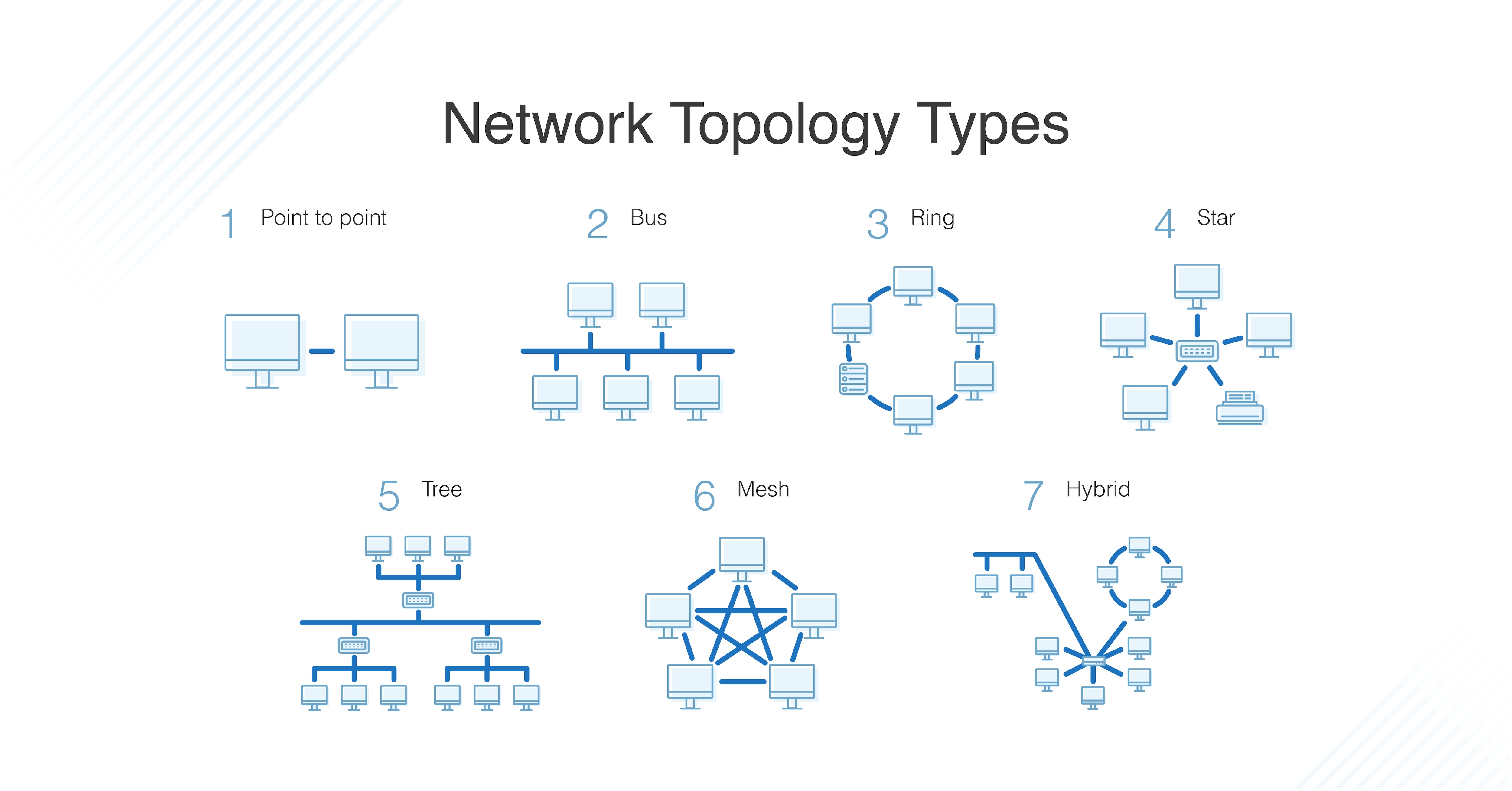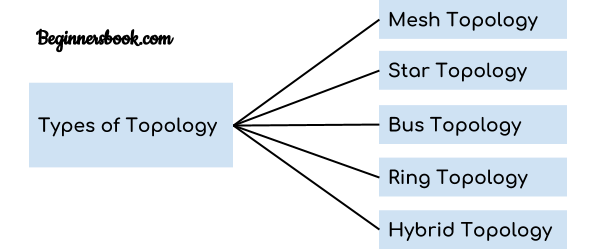Explain Different Types of Topology in Computer Network
C Bus Topology. These are as explained below.

Types Of Network Topology Top 6 Types Of Topology With Their Benefits
Topology generally determines the shape of the network.

. Types of Network Topology 1. Also servers and dedicated technicians are not needed here. This network maybe wired with computer buses eg.
Network topology can be used to define or describe the arrangement of various types of telecommunication networks including command and control radio networks industrial field buses and computer networks. Bus topology is the kind of network topology where every node ie. Logical Physical topologies are Star topology.
Personal Area Network PAN This network is used to establish communication among computer devices within the range of 20 to 30 feet. Hybrid topology inherits merits and demerits of all the incorporating topologies. Hybrid Topology Mesh Topology In mesh topology each device is connected to every other device on the network through a dedicated point-to-point link.
In a star topology each device has a dedicated point-to-point link only to a central controller. Bus Topology The bus topology is designed in such a way that all the stations are connected through a single cable known as a backbone cable. There are two types of topology.
Ring Topology is a topology type in which every computer is connected to another computer on each side. Ring topology is a topology in which each computer is connected to exactly two other computers to form. Types of Network Topology a Mesh Topology.
Topology is a network concept that combined networks ie computers together. The different types of computer networks are. The common types of network topologies are as follows.
It includes the physical layout of nodes computers cables. Bus Topology A bus topology is such that there is a single line to which all nodes are connected and the nodes connect only to the bus. Point to Point P2P.
Point-to-point topology is the easiest of all the network topologies. Bus Ring Star Mesh Tree Diagram Types of Networking Topologies. Physical topology Logical topology Physical Topology Physical topology describes the physical connectivity of the transmission cables.
Network Topology is the schematic description of a network arrangement connecting various nodes sender and receiver through lines of connection. There are many types of network topologies. Physical topology refers to the actual physical layout of the devices on the network.
In a mesh topology every device is connected to another device via a particular channel. The way to arrange or connect patterns of computersnodesdevices used in the network is known as network topology. Every device on the network is.
Network Topologies Given below are the eight types of Network Topologies. The combining topologies may contain attributes of Star Ring Bus and Daisy-chain topologies. Hierarchical topology Bus topology Star topology Ring topology Mesh topology Hybrid topology.
The various types of network topologies are as follows. The network topology can be of two types. Mainly there are two types of topologies.
A Home Area Network is always built using two or more interconnected computers to form a local area network LAN within the home. Learn more about the Computer Network here. Logical topology gives insights about networks physical design.
Logical Topology Logical topology defines how data moves across the nodes using different network protocols. The different types of topologies are. These types of network connections help computer owners to interconnect with multiple computers.
Types of Topology There are five types of topology in computer networks. For example in the United States about 15 million homes have more than one computer. This is the easiest and simplest topology among all.
BUS Topology Bus topology is a network type in which every computer and network device is connected to single cable. What is network topology and types of network topology. There are five 5 types of topology - Mesh Star Bus Ring and Hybrid.
A network topology gives a representation of the types of connections that exists between the devices on the network. Physical topology is the geometric representation of all the nodes in a network. Network Topology is the arrangement of various elements links nodes etc of a computer on a logical network.
In star topology all the devices are connected to a single hub through a cable. Different types of topology Bus topology Ring topology. In a mesh topology every device has a dedicated point-to-point link to every other device.
B Star Topology. There are 2 types of network topology. Physical and logical topology.
Bus topology is the simplest kind of topology in which a common bus or channel is used for communication. Point to Point Topology Point to Point topology is the simplest topology that connects two nodes directly together with a common link. The above picture represents an arbitrarily hybrid topology.
In this method the network. Topologies are of two types including physical topology and logical topology. This hub is the.
Explain the Different Types of Network Topologies 1. P2P Topology The network that direct links two computers are called point to point topology. Network topology is the arrangement of the elements of a communication network.
A bus topology consists of a main run of cable with a terminator at each end. An operating system is not needed and it is the fastest connection. Logical topology refers to how data is passed through the network.
Physical topology is the arrangement of devices and other elements in a computer network. Types of Network Topology. The various types of physical topology are.
There are five types of topology in computer networks. For example 10 devices can be connected to one router physically but they are split into 2 separate virtual networks within the router itself. Hybrid Topology A network structure whose design contains more than one topology is said to be hybrid topology.
Network topology is simply a geometric representation of the interconnections of the computer on a network. Network topology refers to the arrangement of computers connected in a network through some physical medium such as cable optical fiber etc. When it has exactly two endpoints then it is called Linear Bus topology.
Different Types of Topologies Bus Topology Star Topology Ring Topology Mesh Topology Tree Topology Hybrid Topology Bus Topology All the nodes file server workstations and peripheralson a bus topology are connected by one single cable.

The Various Types Of Network Topologies Swiss Network Security Swissns Gmbh

What Is Network Topology Best Guide To Types Diagrams Dnsstuff

No comments for "Explain Different Types of Topology in Computer Network"
Post a Comment